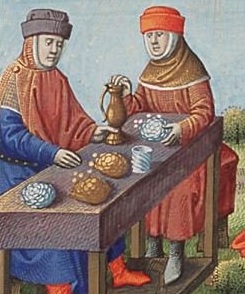The medieval period, spanning from the 5th to the 15th century, was a time of great economic and cultural exchange. Merchants played a crucial role in this exchange, transporting and selling a wide variety of goods across Europe and beyond.
In this article, we will explore the types of products that medieval merchants sold, the routes they traveled, and the challenges they faced in their work.
Types of Goods Being Sold
Medieval merchants sold a diverse range of products, including both luxury and everyday items. Some of the goods that were in high demand during this time include:
- Textiles: Medieval Europe was a major producer of textiles, such as wool, linen, and silk. These were highly sought after by both wealthy and poor individuals, as they were used for clothing, bedding, and other household necessities. Merchants played a vital role in transporting textiles from the places where they were produced to the places where they were needed.
- Spices: Spices were a valuable commodity in medieval Europe, as they were used to flavor and preserve food. They were also believed to have medicinal properties. Merchants brought spices from the East, such as cinnamon, pepper, and ginger, to the markets of Europe, where they were sold at a high price.
- Precious metals: Gold and silver were highly prized in medieval Europe, and merchants played a crucial role in acquiring and distributing these metals. They were used for jewelry, coins, and other decorative items, as well as for trade. Merchants also dealt in other precious metals, such as copper and brass, which were used for various purposes, including making weapons and tools.
- Luxury goods: Medieval merchants also sold a range of luxury goods, such as fine clothing, tapestries, and artwork. These were often imported from other parts of the world, and were only affordable to the wealthy.
- Everyday items: In addition to these high-end products, medieval merchants also sold a wide range of everyday items, such as food, drink, and household necessities. These were often produced locally and sold in markets or fairs.

Trade Routes
Medieval merchants traveled along a variety of trade routes to acquire and sell their goods. Some of the most important routes included:
- The Silk Road: This ancient trade route stretched from China to the Mediterranean, passing through Central Asia and the Middle East. Merchants traveled along the Silk Road to trade a wide range of goods, including textiles, spices, and precious metals.
- The Mediterranean Sea: The Mediterranean Sea was a major hub of trade in the medieval period, with merchants sailing between the ports of Europe, Africa, and the Middle East. They traded a variety of goods, including textiles, spices, and luxury items.
- The Hanseatic League: The Hanseatic League was a network of merchants and cities that dominated trade in Northern Europe from the 13th to the 17th century. Members of the league traded a range of products, including timber, fish, and grain, as well as luxury goods.
- The Atlantic Ocean: During the medieval period, the Atlantic Ocean also became an important trade route, with merchants sailing between Europe, Africa, and the Americas. They traded a variety of goods, including textiles, spices, and precious metals.
Related article: How did medieval merchants travel?
Conclusion
Medieval merchants played a vital role in the economic and cultural exchange of the time period, transporting and selling a wide range of goods across Europe and beyond. medieval merchants were the key in establishing successful businesses and contributing to the flourishing trade of the time period.
